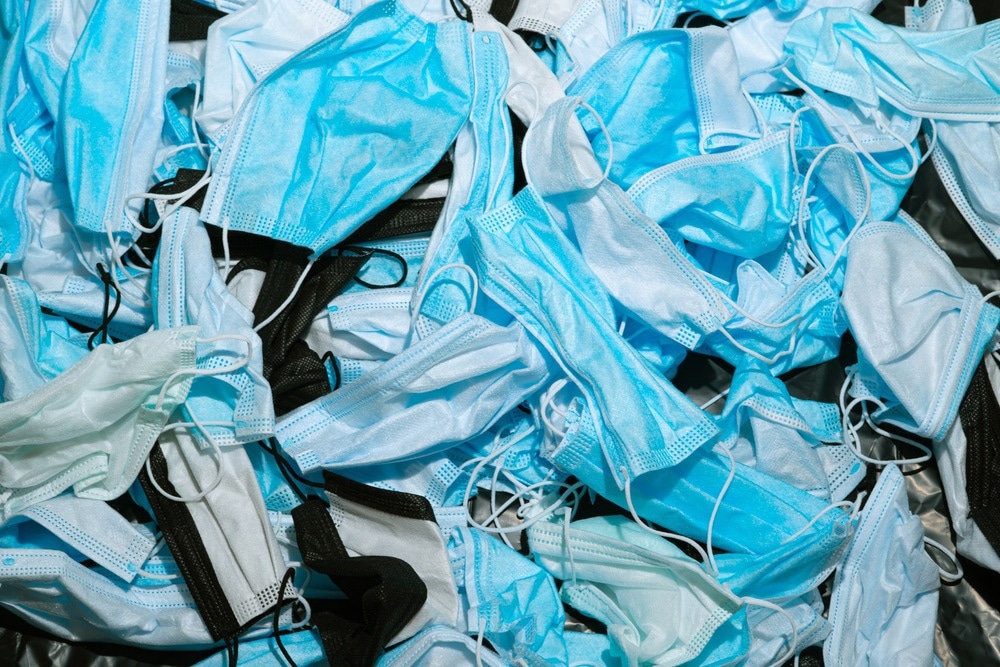NYU Abu Dhabi scientists have created a single-step, organic solvent-free, hydrothermal process for converting polyethylene-based plastic bags and polypropylene-based surgical masks into carbon dots.

Image Credit: Golden Shrimp/Shutterstock.com
An estimated 26,000 metric tons of pandemic-related plastic waste—ranging from medical waste to online shopping packaging—have been dumped into the world’s oceans, making it even more vital to find efficient ways to reuse this non-degradable material.
One approach is to transform single-use plastic into carbon dots, which are biocompatible carbon nanomaterials with applications in environmental monitoring, biological imaging, targeted drug delivery, chemical analysis, disease diagnosis and therapy, and anticounterfeiting. Existing methods for converting plastic into carbon dots are time-consuming and involve toxic chemicals.
The investigators present the development of a new synthesis method which is a simple, cost-effective, and easily scalable method to upcycle plastic waste. Notably, this oxidative degradation method can upcycle plastics that have been contaminated with organic waste, like food scraps, posing a major challenge to existing recycling technologies.
The research was published in the journal Green Chemistry. The senior author of the study is Khalil Ramadi, Assistant Professor of Bioengineering at NYUAD. Mohammed Abdelhameed, a scientist at NYUAD, and Mahmoud Elbeh, an NYUAD undergraduate student, are the first authors of the study.
The scientists also calculated the economic viability of the synthetic method by contrasting the variable costs of this process to traditional chemical recycling processes, considering the economic value of the carbon dots created.
They discovered that the global market value of carbon dots is predicted to hit USD 6.412 billion by 2025, up from USD 2.496 billion in 2019—a high commercial value that outweighs the related processing costs.
The high volume of single-use plastics used in the pandemic, especially surgical masks and medical waste, highlights the need for a solution to manage non-biodegradable waste. It is also anticipated that only 14% of qualified plastic packaging is recycled, despite the fact that its use has increased due to the boom in online shopping, with the remainder ending up in landfills and oceans, where it causes significant harm.
These materials can be ingested by organisms or fragmented into micro- and nano-plastics, which can endanger terrestrial, marine, and freshwater ecosystems, as well as human health.
The new method our team has developed is a cost-effective and safe method that can be easily implemented to significantly reduce the amount of harmful plastic that is released into our ecosystems. In addition to providing a new tool to protect our ecosystems, this approach can efficiently and responsibly produce carbon dots, a versatile nanotechnology whose potential applications are nearly boundless.
Khalil Ramadi, Study Senior Author and Assistant Professor, Bioengineering, New York University Abu Dhabi
Elbeh notes, “We’re very delighted to further support the UAE’s Circular Economy Policy. Given that we are tackling the plastic waste crisis by creating a valuable product using a relatively easy-to-implement method, we’re looking forward to more collaborations to not only scale up this project but also utilize the produced dots for further development and applications.”
Journal Reference:
Abdelhameed, M., et al. (2023) High-yield, one-pot upcycling of polyethylene and polypropylene waste into blue-emissive carbon dots. Green Chemistry. doi.org/10.1039/D2GC04177D.